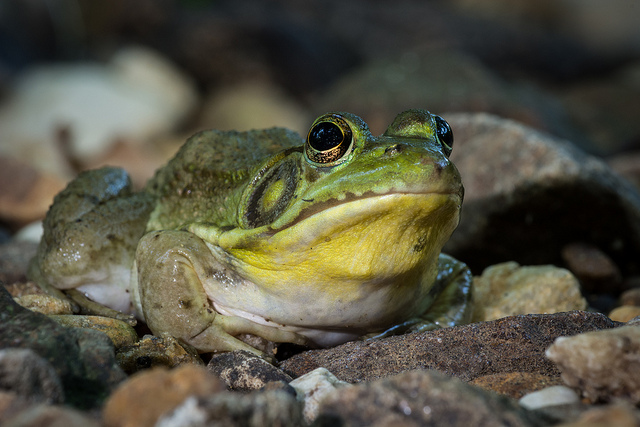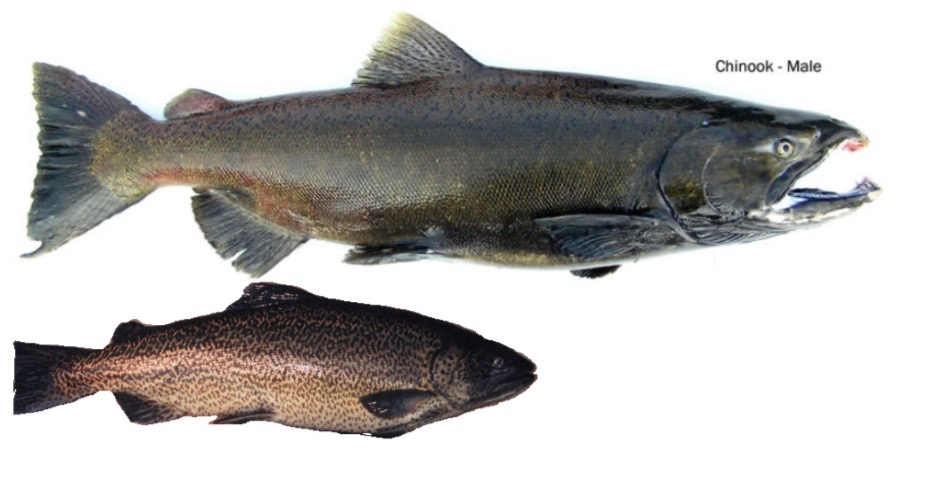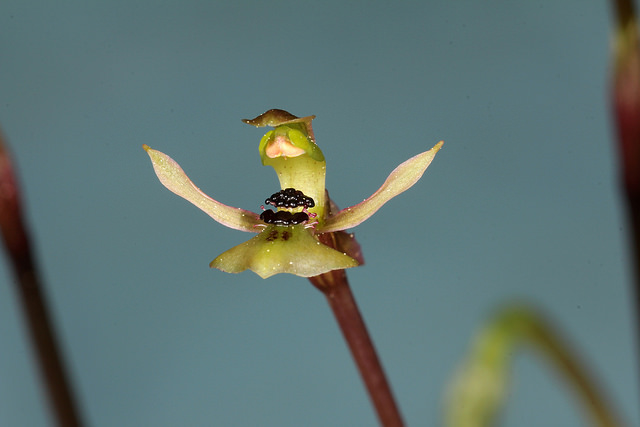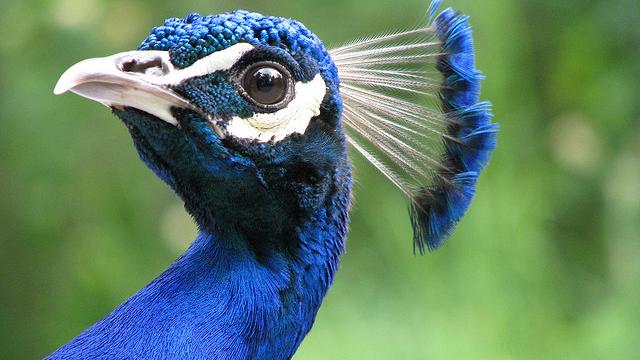Humans use all kinds of gimmicks to win over mates — but you’d think that in nature, it would be all about honest competition. The biggest antlers, the brightest feathers, the most beautiful song, the most perfect displays — each signals the owner’s desirability as a mate. But here are five animals (and one plant) that game the system.
[Top image: Daniel @colblindor via Flickr | CC by 2.0]
Why resort to trickery? It’s simple: sometimes it works. It turns out that evolution doesn’t actually care how living things go about getting their genes into the next generation, so long as they succeed in getting them there. Here are some examples of living things that have added deception to their sexual repertoire.
1) Peacocks Pretend to Be Getting it On
Male peacocks (Pavo cristatus) are supposed to be poster children for sending honest signals. Their enormous tails are hard to grow, difficult to carry around, and should tip off females that their owners are vigorous and generally awesome mates. But when some peacocks find themselves alone, they will let out a loud, hooting copulatory call, making it sound like they’re having some hot bird sex with a lucky (but imaginary) peahen.
Peahens are attracted to the sound of the hoot, and this gives the male a chance to get some real action going once she arrives. A recent study estimated that up to a third of these peacock hoot calls were fake — it’s clearly a trick that works to get peahen attention, but researchers still don’t know whether it makes them more likely to put out.

2) Antelopes Pretend There’s Something Scary Out There
Tsessebe (also known as Topi) antelopes (Damaliscus lunatus) live in loose herds on the African savanna, wandering from one grazing ground to the next, and warning one another with a characteristic snort when a lion, cheetah, or leopard creeps too close.
Females don’t change their wandering ways during the breeding season, but males do: staking out a piece of real estate with piles of their own dung, chasing off the other males, and waiting for females to visit. When a female arrives at a male’s territory, they will mate, but she’s likely to head over to the next male’s territory once they’re done. If the male can keep her there longer, he’ll get more chances to father her next calf. So when she starts to leave, he’ll prick his ears, stare off in the direction she’s headed, and snort the predator warning.
There is no lion. But the warning usually makes the female stick around a little longer. Researchers studying this behaviour found that males made about nine fake snorts for every real one — and they often got to mate after giving her a snort.
[Image: Bernard DUPONT via Flickr | CC BY-SA 2.0]

3)Green Frogs Pretend to be Bigger than They Really are
A green frog’s (Rana clamitans) banjo-like call is supposed to attract females to his piece of the pond and keep other males away. But basic physics conspires against him if he’s smaller than average: smaller males have smaller vocal cords and sing at higher pitches than large males. Large males tend to win in a fight for territory, so what’s a little guy to do? Pitch your voice unnaturally low, of course! It’s not clear whether that lower froggy voice is a turn-on for females, but the evidence suggests it’s a useful strategy to keep rival males away from his pad, which gives a littler frog more uninterrupted time for wooing.
[Image: Andrew E. Russell via Flickr | CC BY 2.0]
4) Cuttlefish Pretend They’re Not Courting
Thanks to the pigment-bearing chromatophores embedded in their skin, cuttlefish have amazing powers of disguise. They can look like a lot of things they’re not: the sandy sea bottom, a pile of rocks, or a member of the opposite sex. Male mourning cuttlefish (Sepia plangon) from Australia use this ability to take sexual mimicry to a new level. If a male finds himself swimming between a rival male and a female, he’ll put female colours on the side of his body that faces his rival, but flash courtship stripes on the side the female can see. Researchers have found that the tactic seems to work: the female disguise keeps larger males from tangling with the cross-dressing cuttlefish, while he mates with females who’ve seen his sexier side.

5) Some Chinook Salmon Pretend To Be Female
Male Chinook Salmon (Oncorhynchus tshawytscha) come in two flavours. When the dominant male “hooknose” form matures, he grows a hump, long teeth, and the eponymous hooked nose — all characteristics that help him fight other large males and guard females until they’re ready to lay eggs. The other male type, the “jack”, looks more like a female, and hides on the sidelines while the larger males duke it out. When a hooknose and his mate start to spawn, the jack male dashes over and around their nest, squirting sperm all the while. Jack sperm swim faster than hooknose sperm, so at least some of the eggs will wind up as the jack’s fry.
[Image: Brent Young | used with permission]

Bonus: This Orchid Pretends to Be A Sexy Female Wasp
Lots of flowering plants bribe insects with food to get them to carry pollen (that is, sperm) to the plant’s potential flowery mates. The broadlip bird orchid (Chiloglottis trapeziformis) uses the promise of sex instead.
The flower’s broad sepals and dark inner petals vaguely resemble the outline of a female thynnine wasp, but the orchid’s scent seals the deal. It mimics the wasp’s sex pheromone, pumping out more than 10 times as much of the chemical as a female wasp does. A male wasp, attracted by the sweet scent of a ready and willing female, copulates with the flower. When the wasp flies away, he’s no closer to being a father, but he is covered with pollen that — if he’s tricked again — will start a new generation of flowers growing.
[Image: John Varigos via Flickr | used with permission]
[Sources: Dakin and Montgomorie 2014; Bro‐Jørgensen and Pangle 2010; Bee et al. 1999; Brown et al. 2012; Young et al. 2013; Schiestl, 2004]
